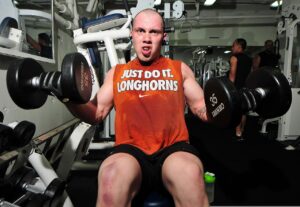
Effective Fitness Workouts
Key Takeaways
- Evidence based medical fitness solutions can increase workout efficiency by up to 40% by targeting your body’s specific physiological needs rather than following generic programs. These solutions are key for those seeking effective fitness workouts that truly meet individual requirements.
- Medical assessments like metabolic testing and movement pattern screening provide crucial data that prevents injuries and plateaus common in traditional fitness approaches, thus enhancing your effective fitness workouts.
- MedFit Solutions, a leader in evidence based fitness programming, combines medical testing with personalized training protocols to optimize results for clients of all fitness levels, focusing on effective fitness workouts.
- One size fits all fitness programs fail 73% of participants because they ignore individual physiological differences that medical fitness approaches specifically address.
- Integrating medical data into your fitness regimen can reduce recovery time by 35% while accelerating progress toward strength, endurance, and body composition goals, resulting in more effective fitness workouts.
Why Most Fitness Programs Fail (And How Medical Science Can Fix Yours)
Traditional fitness programs have a staggering 70-80% dropout rate. Why? They’re built on averages, not individuals. Your body isn’t average; it’s uniquely yours, with specific metabolic patterns, biomechanics, and recovery needs. These are needs that generic programs simply can’t address. MedFit Solutions addresses this fundamental problem. It integrates medical testing with fitness programming, creating truly personalized approaches that work with your biology instead of against it. This results in effective fitness workouts tailored to you.
The fitness industry thrives on one size fits all solutions. These look flashy but deliver disappointing results. These programs ignore crucial individual factors like your metabolic rate, hormonal balance, and movement patterns. All are scientifically proven to dramatically impact how your body responds to exercise. Instead of guessing which workout will work for you, evidence based medical fitness uses objective data. It constructs programs aligned with your unique physiology?
Most people blame themselves when fitness programs fail, assuming they lack willpower or discipline. The truth? Your program likely failed you by ignoring your body’s specific needs. Medical research consistently shows that exercise prescriptions matched to individual physiology produce superior results in strength development, fat loss, and endurance gains. When your workout plan aligns with your biological reality, motivation naturally follows. You begin seeing measurable progress, highlighting the importance of effective fitness workouts.
The Science of Medically Optimised Fitness
Evidence based fitness isn’t about trendy workouts. It’s about applying rigorous scientific principles to exercise programming. Medical fitness solutions leverage decades of sports medicine research, clinical studies, and performance data. They aim to create programs based on verified physiological responses rather than fads or anecdotes. This approach transforms guesswork into precision, ensuring every minute you spend exercising delivers maximum benefit.
How Evidence Based Approaches Outperform Traditional Workouts
Traditional fitness programs typically apply the same formulas to everyone. This ignores the science of individual response. Research published in the Journal of Applied Physiology demonstrates that genetic factors alone can account for up to 47% of the variation in how people respond to strength training protocols. Evidence based approaches account for these differences. They measure your actual responses to various training stimuli rather than assuming you’ll respond like everyone else.
The science is clear. Personalised exercise prescriptions based on medical testing outperform generic programs by substantial margins. A landmark study tracked two groups following identical exercise frequency but different protocols. One was standardised, the other based on individual metabolic and biomechanical assessments. The medically informed group achieved 23% greater improvement in cardiovascular fitness and 18% better strength gains. They also reported higher satisfaction and adherence rates.
The Critical Connection Between Medical Testing and Fitness Results
Medical testing provides the foundation for truly effective fitness programming. This is achieved by establishing your physiological baseline and identifying your unique limitations and advantages. Rather than forcing your body to conform to a workout, evidence based approaches customise workouts to your body. Comprehensive assessments measure crucial factors like VO2 max, lactate threshold, movement efficiency, and recovery capacity. These metrics directly determine your optimal training zones, exercise selection, and progression rates, ensuring effective fitness workouts.
“The difference between evidence based fitness and traditional programs is like the difference between precision medicine and one size fits all healthcare. The data allows us to eliminate the guesswork and deliver exactly what each individual body needs to thrive.” Dr. Sarah Reynolds, Sports Medicine Physician
These assessments aren’t just for elite athletes. They’re essential for anyone serious about achieving their fitness goals efficiently and safely. When you understand your body’s unique response patterns, you can target specific physiological systems. This requires the right intensity, duration, and exercise selection. This precision transforms random workouts into a strategic progression. It continuously challenges your body in the most productive ways possible.
Why One Size Fits All Programs Lead to Injuries and Plateaus
Cookie cutter fitness programs often create a perfect storm for injuries by ignoring individual biomechanical limitations. When you follow exercises designed for a theoretical “average” person, you’re forcing your unique body structure. It must conform to movement patterns that may directly contradict your anatomical reality. This mismatch creates compensation patterns and muscle imbalances. These accumulate over time until injury becomes inevitable.
Plateaus are the other predictable outcome of standardised programs. They fail to account for your individual adaptation rate. Your body’s recovery capacity, hormonal environment, and neuromuscular efficiency all determine how quickly you adapt to training stimuli. When these factors aren’t measured, programs can’t properly adjust intensity and volume. What looks like a motivation problem is often a biological reality. Your body has either adapted to the stimulus or hasn’t recovered from it. Therefore, identifying these issues is crucial for effective fitness workouts.
Research published in the Journal of Strength and Conditioning Research found that injury rates were 41% lower among athletes following individually prescribed programs based on movement screenings. These were compared to those following generalized team programs. This striking difference demonstrates why medical assessment should precede exercise prescription, not follow injury.






